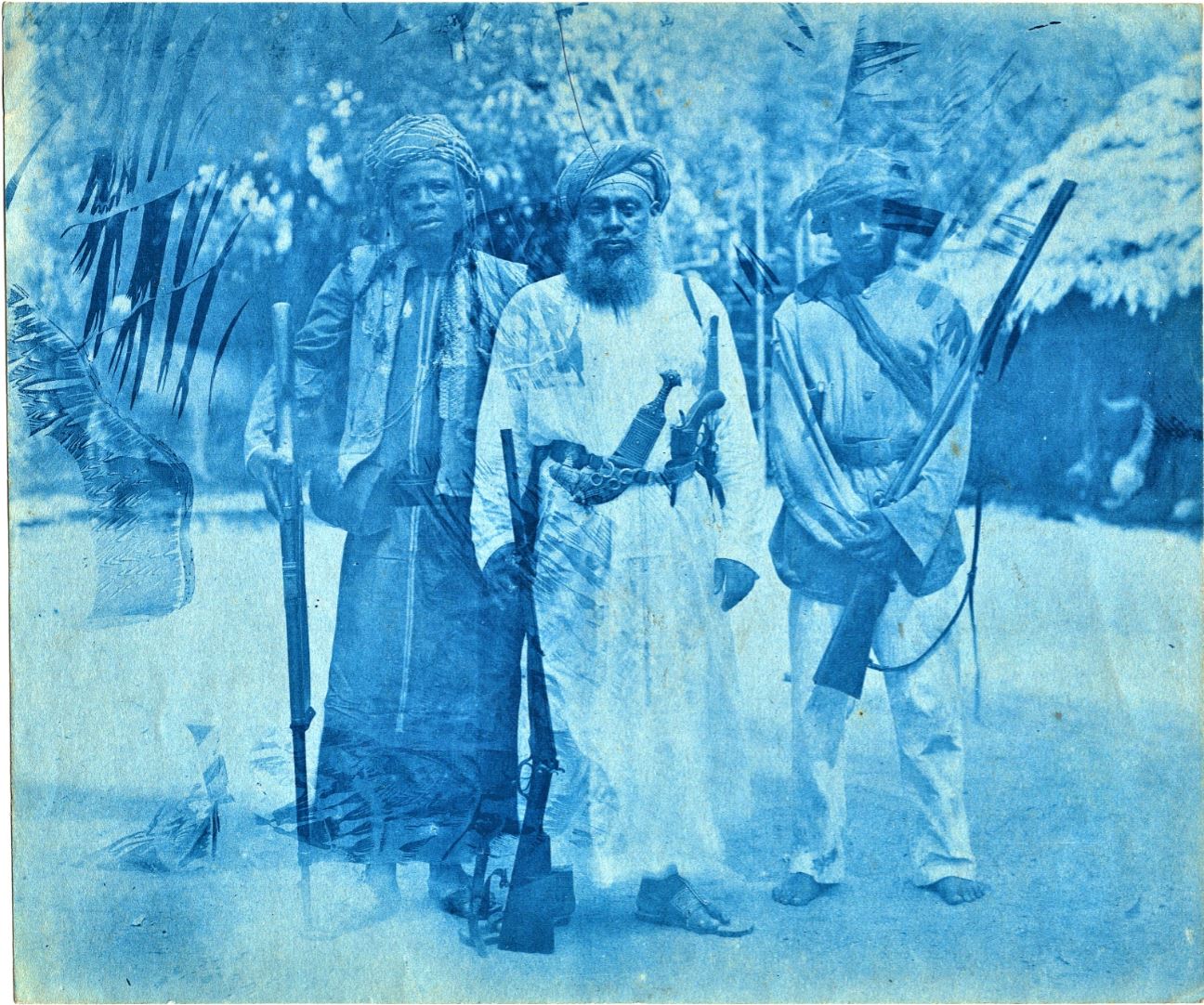 |
|
Bushiri leader of the Araberaufstand
|
Background to the German occupation of East Africa and uprising (araberaufstand): The German East Africa colony was not initiated by the German government but by a group of adventurers, in fact the government initially opposed the idea. It began with Carl Peters, an adventurer funded by small investors who signed paper treaties with several (illiterate) native tribal chieftains (based on empty promises of protection) on the East African mainland opposite Zanzibar (thereby bypassing the Arab rulers) The Omani Arabs were not interested in colonies but wanted to be able to trade (slaves and ivory) in East Africa without problems, therefore their influence / rule was based on agreements with local leaders and protection posts along the trading routes as far as East Congo. The old Arab caravan routes from the interior ended in the fortified harbours Bagamoyo, Mombassa and Kilwa.
In 1884/1885 There was a meeting in Berlin where the different European powers in particular Belgium, Germany and Britain agreed the borders of the Congo free-state but also divided up East African between the British and Germans. When the Sultan of Zanzibar protested, since he was the de-facto ruler on the mainland, German chancellor Otto von Bismarck sent five warships and trained their guns on the Sultan's palace. The Sultan of Zanzibar had no option but to agree. On board of one of the German ships was princess Emily Ruete (the eloped sister of the Sultan) with her three children (see the separate chapter on Emily on this website!!)
In 1885 the German government granted an imperial charter (signed by Bismarck) to Peters company to establish a protectorate in East Africa. Subsequently he founded the "Deutsch Ostafrikanische Gesellschaft Carl Peters Genossen" (DOAG). Peters then began exploring south to the Rufiji River and north to Witu, near Lamu on the coast.

Very rare original photo of Bushiri al Harthi in his camp in Nzole
This photo was taken by the French missionary Etienne Baur on 20 march 1889
For details see the PhD paper "Pere Etienne Baur en de Arabische Opstand" van H.G.M. Tullemans
Background to the Arab uprising against the Germans and the Sultan in 1888-1890 (Araberaufstand): In 1888/1889 The Arab revolt lead by Buschiri started and which could only be suppressed with the help of the German navy and army. From this point the German government was actively involved. The revolt by Arabs and some local tribes was against the Germans and their weak Sultan of Zanzibar. The revolt was eventually suppressed by a German / Anglican ship blockade and by German troops. German warships patrolled the coast and searched Arab vessels. In February 1889 von Bismarck appointed Lieutenant Herman Wisssmann as Reichscommissar of German East Africa. Wissmann concentrated a protection force (Schutztruppe) of German officers and native Ashkari soldiers, who, with support of the German Marine and the Royal Navy subsequently suppressed the revolt. Bushiri al Harthi was hanged.


Collection of 50 photos taken by J. Sturtz and collected and annotated by Emil Voelker of the German warship Carola. Lower resolution variants of these photos were also used in a rare and valuable book, requested by the German emperor, with the title "Land und Leute von Ostafrika etc." with interesting text describing the photos and events by Wangemann 1890 (second edition) and 1894 (third edition) The first edition of this book by Wangemann is unrecorded, maybe there is a relation with our set of 50 photographs. Our photos differ from those in Wangemann as sometimes the images are cut off a bit, but in many cases slightly more image is shown than in the Wangemann photos!
Note: Several of the manuscript captions by Voelker of our photos maybe incorrect (we indicate differences with the description by Wangemann's book "Land und Leute von Ostafrika"